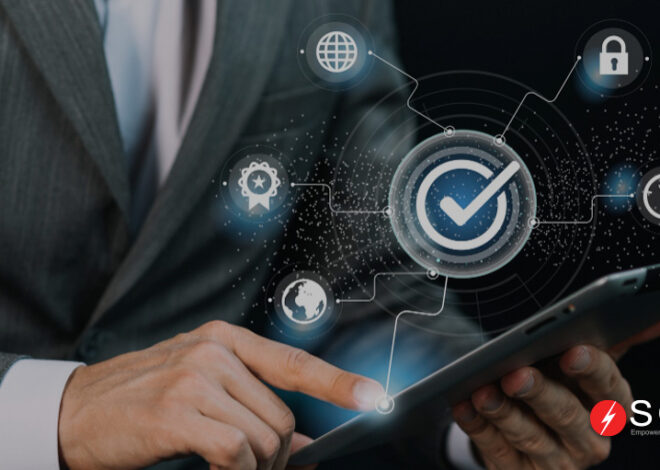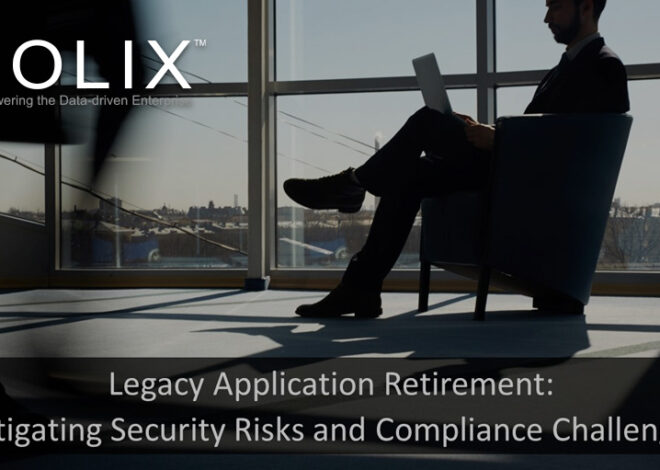
Decommission or Retire Legacy Applications to Make Room for Digital Transformation
Legacy applications bog down digital transformation in many organizations. Businesses must modernize to stay competitive; using older apps can slow down and even hinder this process, wasting valuable resources—such as staff, money, and IT infrastructure—in the process. For this reason, CIOs, IT and I&O leaders are under immense pressure to modernize and support digital initiatives with an intent to deliver transformational experiences for internal and external stake holders.
However, for most organizations, these legacy applications are still the center of gravity within their application portfolio. These applications contain important data and provide valuable functions to digital products and services. However, these aging applications and their ecosystem were not designed with the interoperability, flexibility, and scale needed for transformation in mind.
In fact, data from global cloud services company 2nd Watch found that “more than 79% of businesses believe legacy applications are hindering their digital transformation initiatives.
To support digital transformation, organizations are taking up rip-and-replace or continuous modernization strategies to manage legacy IT portfolios. But even continuous modernization also eventually results in replacement of legacy applications.
Even as IT organizations focus on replacement as part of their transformation initiatives, they seldom plan for removing old applications, resulting in bloated IT portfolios. Since these legacy applications contain valuable historical data for regulatory, legal, and business access requirements, organizations can’t just delete these applications. They require diligent oversight, and can create significant technical, security and economic challenges.
Rather, businesses should look toward responsible application retirement and decommissioning processes instead. We recommend you review SOLIXCloud application retirement-as-a-service for an enterprise wide archiving strategy that is low cost, compliant and secure. Read on for more details.

Why Should You Retire or Decommission Legacy Applications?
Many organizations retain legacy applications for data access to assist with audits, compliance, and legal purposes. But these apps eat up the already constrained IT budgets without contributing to the bottom line. Instead, application retirement is a smart choice for such applications. Let’s explore why, and what how the strategy can benefit your business.
Eliminate Risks Associated with Obsolete Technologies
- Solution no longer supported by vendors
- Unsupported databases and OSs compromising data security
- Unsupported hardware
- Limited availability of people with knowledge and skills on legacy applications.
- Often data is siloed and inaccessible from new and current applications
Eliminate Infrastructure & maintenance costs
- Free up valuable hardware, software licenses and associated budgets and repurpose them for higher ROI initiatives
- Free up IT personnel from having to manage legacy and obsolete applications
Meet Data Retention requirements
- Long-term & real-time access to data for audit, compliance, and business reporting without depending on legacy applications
- Lower cost of data retention
- Faster and self-service E-Discovery and legal hold management
Comply with data privacy regulations
- Respond to data subject access requests
- Delete or Obfuscate PII data as needed
Considerations For Retiring or Decommissioning Legacy Applications
After deciding which applications to retire, it’s important to consider the process and outcomes. Given that you’ll be dismantling an application and its data, ensure that the application retirement is future proof.
- Costs vs Benefits: Since your primary goal is to retain data long term at a lower cost than compared to retaining the legacy application itself, ensure your archival solution is meeting your expectation with regards to costs and decrease in maintenance effort and resources.
- Completeness: Since you are going to decommission the entire application, be sure your archiving strategy includes all the structured and unstructured data from the application. In a few scenarios, unstructured data might have been stored in external file storage systems, do take that into account as well.
- Data Access Requirements: Review the post-application decommission data access requirements. Ensure all the requirements can be supported by the new archiving platform
- Lock down the applications: ensure the application is in read only mode and no other new updates are happening
- Validation: Perform necessary validation to ensure all structured and unstructured data has been archived in its entirety. Also validate data integrity is intact post archival
- Perform UAT: Post archival and before decommissioning the application, perform a thorough UAT to ensure all business, audit and compliance requirements are met
Solix: Your Trusted Partner in Digital Transformation
Decommissioning legacy applications is a practical approach to saving money and applying labor and assets where they’re most useful. The benefits are even bigger when you are retiring legacy applications to make way for digital transformation.
But decommissioning can be complex and expensive if done wrong. The right way to move data from old applications to the cloud is with Solix, your trusted data management, and archiving partner.
Out with the old and in with the new: Start your migration with Solix today!
Solix is the leader in Enterprise Archiving solutions and is trusted by global organizations across Healthcare, Banking, Insurance, manufacturing, energy, and retail sectors.



